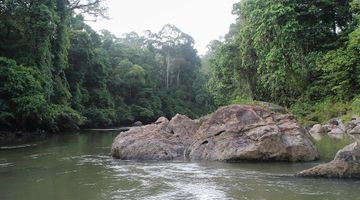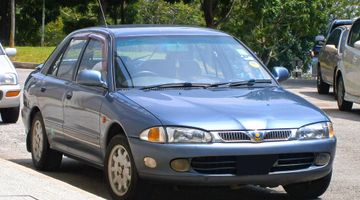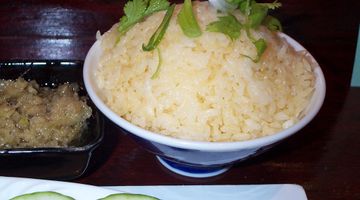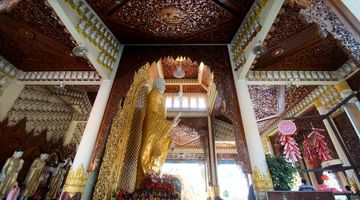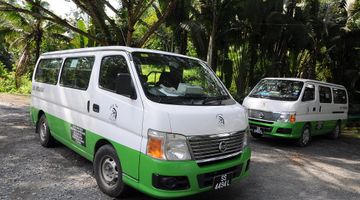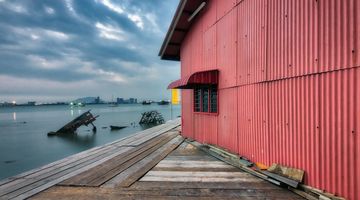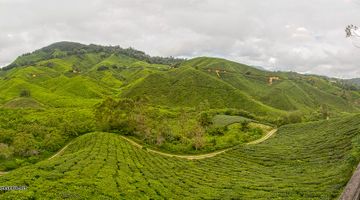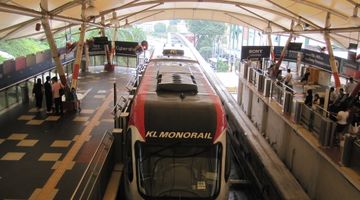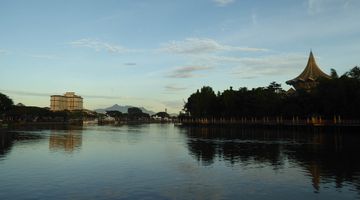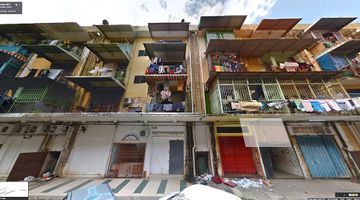Shopping in Malaysia – Best Things to Buy
Apart from food, Malaysia is famous for shopping attracting millions of tourists with empty suitcases each year. Shopping centres fill Kuala Lumpur, Penang and other Malaysian cities with the latest fashion, clothes, shoes, perfumes as well as electronics, handicraft and souvenirs at affordable prices.
The best places to shop
Kuala Lumpur
The Malaysian shopping experience is at its best in Kuala Lumpur. You’ll find shopping malls selling designer clothes such as in KLCC along with more budget-friendly stalls in the Bukit Bintang area. There are also a few night markets, or ‘Pasar Malam’ in Kuala Lumpur too such as Pasar Malam Taman Connaught, which takes place every Wednesday and stretches for almost two kilometres.
Get to KUALA LUMPUR from SINGAPORE
Get to KUALA LUMPUR CITY CENTRE from KLIA
Penang
Penang is another favourite area for shopping in Malaysia with three top-class malls including Gurney Paragon, Queensbay and Straits Quay Marina Mall. The variety of products on sale suits any budget from cheap clothes up to the latest technology. You can also visit night markets in Penang too, and tourists often find the prices to be slightly lower than in Kuala Lumpur.
Get to PENANG from KUALA LUMPUR
Langkawi and Labuan islands
If you’re looking for duty-free shopping, you have the choice between two Islands.
Langkawi, a popular tourist destination in its own right, is the first where tourists have access to tax-free items such as cosmetics, chocolates, very cheap alcohol by Malaysian standards and a range of other souvenirs as well as clothes.
The other island is Labuan off the coast of Sabah. Labuan is a favourite place for local Sabahans to buy alcohol, chocolates, perfumes and even cars! Few tourists visit, and it’s out of the way unless you’re travelling to East Malaysia.
Get to LANGKAWI from KUALA LUMPUR
Get to LABUAN from KUALA LUMPUR
Malacca
Malacca is a great place for shopping on the background of heritage buildings, ancient landmarks and colonial mansions. While the city boasts several worth visiting shopping malls – from the vintage-styled trendy Hatten Square Suites Shoppes to the biggest Dataran Pahlawan Melaka Megamall, the absolute must-go is the world famous Jonker Street flanked with centuries old galleries and museums and offering an incredible collection of local items to suit all tastes.
Get to MALACCA from KUALA LUMPUR
Can you bargain in Malaysia?
As with the rest of Southeast Asia (SEA), you need to bargain in the markets to get a good price. But, only try your haggling skills in markets without fixed prices. Any shopping malls, supermarkets, restaurants, food courts and smaller shops with a price is what you pay. Just remember that if you get a receipt, you can’t ask for a lower price.
So, what’s the art of bargaining in Malaysia? Most of the vendors will be Chinese Malaysians who sell a range of products, clothes and trinkets. If you’re in a market with lots of other foreign tourists, expect the quoted price to be higher. When you ask how much, the vendor often gives an amount that’s usually double the actual rate or higher. Make sure you know what the price range for that particular item is before you bargain.
Other tips include showing shock when they give the price and come back with an exaggerated ‘mahal’, which means expensive in Bahasa Malaysia. Always smile and be willing to walk away in most places and never ask for change if you give a large denomination note because you won’t get it! There are plenty of bargains in Malaysia especially if you buy in bulk. But as a foreigner, you’ll always pay more than a local.
A word of warning. People wanting to bargain on Petaling Street in Kuala Lumpur should be very careful. The Chinese merchants who engage in negotiations expect to make a sale at the end, and they get angry with those who don’t for wasting their time. If you can’t agree on a price and walk away, they’re likely to shout at you. So, if you’re in Petaling Street, only bargain if you want to buy it!
The best things to buy in Malaysia to take home
The abundance of shopping in Malaysia gives tourists the opportunity to bring home any number of souvenirs to keep the memory of their trip alive. Here are 15 unique things you can buy in Malaysia to make that perfect gift or souvenir.
1. Batik
Batik is a type of fabric made from silk and often used to create shirts and accessories. The high-quality material has elaborate, intricate and multicoloured patterns making an ideal gift for anyone who likes arts and crafts. Batik is famous in both Malaysia and Indonesia with each region creating their own styles and patterns. The price of Batik varies depending on quality from RM 40 ($9.60) up to RM 100+ ($24).
2. Sarong
A sarong is a versatile cloth both men and women wear in Malaysia. Each has its own patterns and styles and can be bought for as little as RM 20 ($4.80). Sarongs are extremely adaptable, and you can use them in a range of situations both in Malaysia and back home.
3. Hand-woven gifts
Bamboo is ubiquitous in SEA and strips are sometimes woven into handicraft such as baskets, ornaments and souvenirs. You should be able to find these on sale in touristy areas or local handicraft shops.
4. Tropical fruit chocolate
If you’re a fan of chocolate and love tropical fruit, try tropical fruit chocolate. Flavours include the notorious durian as well as jackfruit and many others. You may not be able to bring the fruit back with you, but you can in the form of chocolate!
5. Songket
A Songket is a type of fabric unique to Malaysia consisting of multi-coloured threads interwoven into patterns similar to batik. The material itself can be used to make clothes and accessories or hang on your wall as a decoration. Songket represents the fusion of Chinese, Malaysian and India cultures.
6. Cucuk Sanggul
For a more traditional souvenir, buy a cucuk Sanggul. Sanggul means to put your hair in a bun. Cucuk Sanggul are hairpins made from either silver or gold with a decorative end. Some have patterns; others have images of animals and mythical creatures. The price ranges from at least RM 100 up to RM 300 ($22 to $74) and higher depending on material quality. You may need to go to a specialist shop to buy one.
7. Tropical art
Some of the local handicraft and art shops have a selection of hand-drawn pictures and paintings of a tropical environment. Many have vibrant colours and will look perfect hanging in your front room. The art often depicts palm tree, banana leaves and houses on stilts especially in a 'kampung' (countryside) setting.
8. Instant noodles
The shelves in the supermarkets and convenience stores are full of instant noodles. Most are unique to Asia and may not be available back home. If you like noodles, buy some Malaysian ones and bring them back home. A pack of five local instant noodles should cost no more than RM 6 (less than $2), which is much cheaper than many other countries.
9. Rice wine
Malaysia may not be flooded with alcohol like other SEA countries. But some of the indigenous communities in Sabah and Sarawak brew a special type of liquor called rice wine. As the name suggests, rice is fermented and distilled into a drink that shares similarities with vodka. You’re unlikely to find this in Western Malaysia, though it’s available in Sabah and Sarawak. If you know the right place, you can get a 1-litre bottle of rice wine for as little as RM 10 to 20 ($2.40 to $4.80).
10. Clothes and shoes
Anyone who lives in the west knows how expensive shopping can be. And those in Asia often experience being unable to find clothes or shoes that fit. Malaysia combines the best of both. Casual t-shirts may set you back RM 20 ($4.80), and a pair of decent shoes shouldn’t be more than RM 100 ($24).
11. Dodol
Dodol is a sticky toffee-like sweet with a soft texture often eaten as a dessert. You can find a range of flavours including some with tropical fruits such as durian. Shops often sell dodol in a prepacked box in the same way as confectionary. Depending on where you buy it from, expect anything between RM 15 ($3.60) and RM 30 ($7.20) for a large box. But beware of buying in the touristy areas; the price can be almost double. If you’re in Malaysia around major festivals, you may be able to find a better deal.
12. Sabah Pearls
Pearling was a major industry in Sabah in a bygone era. Divers without sophisticated equipment dove to the shallow depths of the South China Sea to make a living. Today, speciality shops sell pearls as ornaments and jewellery such as necklaces and earrings. Prices start from RM 100 ($24) to several thousands of ringgits depending on the quality and rarity of the pearl. However, buying in Sabah is often significantly less expensive than elsewhere. Shop around as the price and quality varies considerably.
13. Sabah Tea
Tea drinkers will love the locally-produced oraganic Sabah Tea which you can find in Sabah and West Malaysia. The tea plantation in Ranau, a small town a few hours from Kota Kinabalu, harvest the preservative-free leaves by hand. Tours are available for those who are interested to visit and learn about the process. Some say the tea has health benefits too. Expect to pay at least RM 5 ($1.20) for 200 grams box of loose tea or around RM 10 for a box 20 tea bags. Be sure to order a cup to sample the tea before buying a few boxes to take home.
14. Spices
When walking through the streets of any town or city in Malaysia you’ll notice the multiculturalism and mixture of different races and ethnicities. Each group has their own style of cooking that uses various spices like saffron, paprika, curry powder, turmeric among other types in their food. Spices are on sale at very reasonable prices in markets or speciality shops around the country, especially in Kuala Lumpur. When you’re at the restaurant, ask the waiter or chef what they use and try to buy some to bring back home. Having the right spices allows you to replicate and cook some of the delicious food yourself.
15. Old Town Instant White Coffee
When you’re in Malaysia, you’re likely to drink some Old Town coffee. Old Town has a strong flavour with a texture that’s both milky and smooth to drink. Tourists tend to fall in love with the coffee. A big packet of instant coffee with 15 sachets in the local supermarkets cost around RM 15 ($4) allowing you to have your favourite drink when you get back home.
The five best shopping centres in Malaysia
If you’re travelling for the Malaysian to fill your suitcase or just soak up the shopping experience, check out the malls first. Here are five of the best in Kuala Lumpur, Penang, Langkawi and Sabah for high-quality products at affordable prices.
1. Suria KLCC, Kuala Lumpur
Suria KLCC is a high-end shopping mall in the golden triangle of Kuala Lumpur and a major stop on LRT (Light Railway Transit) from KL Sentral. Shops include Marks & Spencer’s, Michael Kors, Tiffany & Co, and Versace. The mall usually attracts customers from the Middle East especially for the Christmas and end of year sales. You can also take a stroll in the park outside the mall to get excellent photographs of the fountains and Kuala Lumpur’s iconic Petronas Twin Towers. New shops selling international brands open all the time in this prestigious mall.
2. Nu Sentral, Kuala Lumpur
Nu Sentral is part of Kuala Lumpur Sentral Station. This newly built mall is aimed towards average shoppers and locals with more budget-friendly prices. Shops include Parkson, Brands Outlet, Factory Outlet Store and a grocery store. Electronics stores have smartphones, tablets and brands such as Vivo, Oppo and Apple. This shopping centre is a great place to shop if you're staying in Brickfields area. Several restaurants are inside Nu Sentral too.
3. Teow Soon Huat Duty-Free, Langkawi
Langkawi has a reputation for duty-free shopping among both domestic and international tourists. And there’s no better place on the island than at Teow Soon Huat inside Langkawi Parade Megamall. You can find everything from tax-free liquor and cigarettes to a range of confectionary and perfumes at up to 70% off the retail price elsewhere in Malaysia. If you’re visiting Langkawi, check out the mall even if you don’t plan to buy anything as you may stumble on the deal of a lifetime.
4. Gurney Paragon Mall, Penang
Gurney is the main shopping centre in Penang’s capital, Georgetown where the locals and tourists like to hang out and indulge in retail therapy. Shops sell clothes at big discounts as well as named brands, jewellery and electronics. The mall itself is inside an expensive residential block and has restaurants, a movie theatre and beautiful views of the esplanade.
5. Suria Sabah, Kota Kinabalu
Kota Kinabalu, Sabah’s capital, has a large shopping mall in the city centre overlooking the South China Sea. You can find a bookstore, supermarkets and a cinema inside. Shops sell popular brands such as Adidas, Nike and some budget outlets like Factory Outlet Store and Brands Outlet. There’s also a food court and a sky bar with an excellent view of the sea.
Conclusion
Malaysia is an excellent place for shopping in SEA where tourists can get clothes, shoes and other goods at a fraction of the price back at home. Whether you want a new wardrobe or a cool memento for a unique souvenir, you’ll find it in Malaysia.







